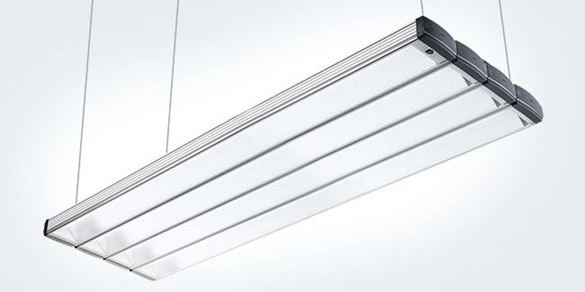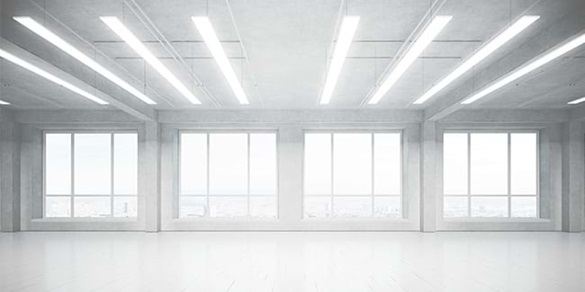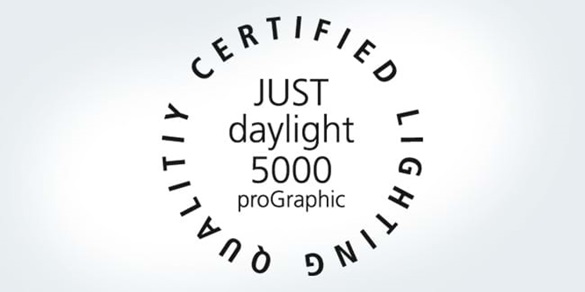Standardized color matching to ISO 3664:2009
The valid ISO 3664:2009 standard regulates the viewing conditions for the color proofing of originals and reproductions in the graphic arts industry. The users are photographers, advertising agencies, classical prepress businesses, and printing houses. The ISO standard essentially defines the requirements for the viewing conditions, test methods, and both obligatory and recommended targets to be achieved.
What is important about the light quality?
The standard describes the spectral energy distribution of the D50 illuminant between 300 nm and 780 nm in increments of 5 nm. Other conditions to be fulfilled by a standardized viewing device in accordance with this standard are the chromaticity coordinates (x,y 10°) with a tolerance of max. 0.005°, a color rendering index CRI (CIE 13.3) > 90, and metamerism indices of MIvis < 1.0 and MIuv < 1.5. The metamerism index defines the quality of the spectral simulation of the D50 illuminant by the respective light source in the visible (vis) and UV ranges.
Natural daylight contains a natural UV component, which excites optical brightening agents (OBAs) in printing papers. As a result, the OBAs have an influence on color rendering. To make this effect predictable in the printing process, and to achieve a better match between standardized light and natural daylight, the 2009 version of ISO 3664 defined the metamerism index for the UV range from 300–400 nm with far tighter tolerances (MIuv ≤ 1.5). This amendment meant that the UV component in standardized lamps had to be substantially increased. The new conditions for standardized light make the influence of OBAs in production paper visible, thus allowing them to be controlled using the classical methods of color management.
In combination with the ISO 13655:2009 – Measuring condition M1, and the new FOGRA51/52 printing conditions, a self-contained concept for a standardized quality assurance process across the entire printing industry has emerged that was completed by the adoption of ISO 12647-2:2013 for offset printing. The permanently controlled D50 light conditions to ISO 3664:2009 are an indispensable link for practical implementation of the Process Standard Offset.
Requirements relating to the lighting
In addition to the demands on the spectral quality of the light, stringent requirements are also imposed on the illumination of the viewing surface and the ambient conditions. The reliable comparison of colors requires a high, uniform illuminance, which is defined as 2000 lux (± 500 lux, recommended: ± 250 lux) in the middle of the viewing surface. In this context, the illumination at the edge of surfaces up to 1 m² in size may not drop below 75% of the maximum value measured in the middle (not below 60% for surfaces > 1 m²). Different brightnesses subjectively lead to an incorrect color impression, and this can possibly result in expensive misjudgments.
Influence of the viewing environment
Colors in the area surrounding the viewing surface affect perception, which is why the standard prescribes neutral-gray, low-reflection ambient conditions. Be it a booth or room walls, the reflectance of the coating of the viewing environment is set at a maximum of 60%. Unless otherwise stated, JUST standardized viewing booths and stations are coated in neutral gray according to Munsell N7, which meets exactly these requirements.
JUST Normlicht devices comply with ISO 3664:2009
The JUST daylight 5000 proGraphic D50 fluorescent lamps and new JUST LED moduLight luminaire developed by us likewise clearly exceed the stringent requirements of the standard in relation to metamerism indices and colour rendering. That allows you to create viewing conditions to the highest quality standards. In conjunction with JUST daylight 5000 proGraphic lamps or LED technology, JUST Normlicht devices meet the requirements of ISO 3664:2009 within very narrow tolerances.






